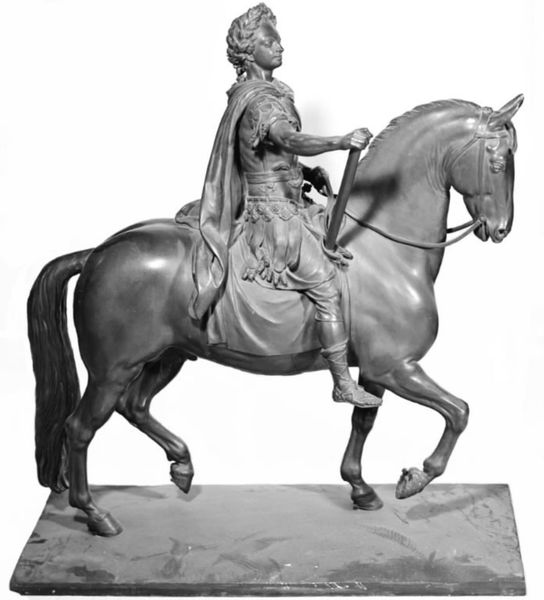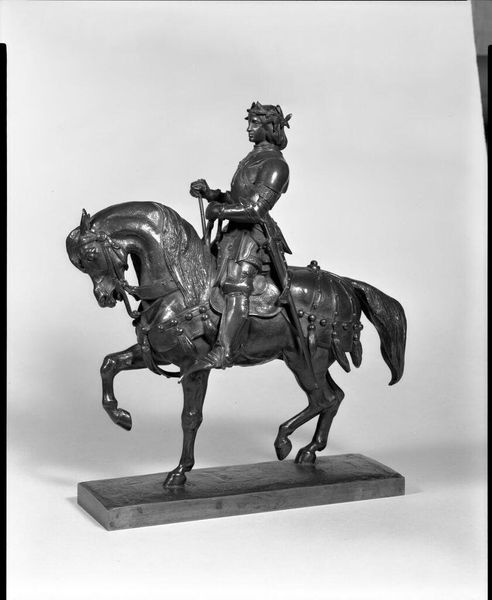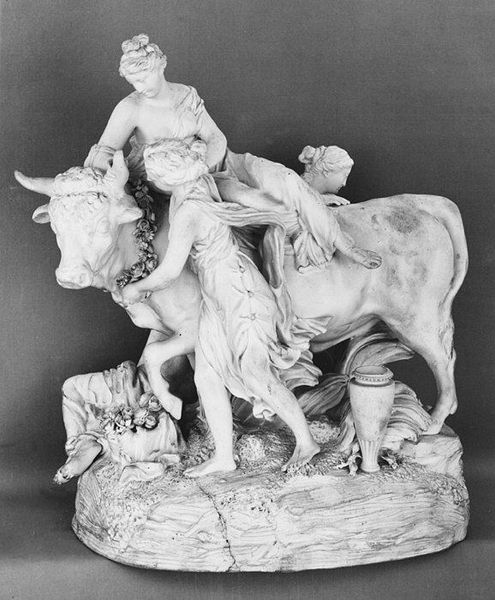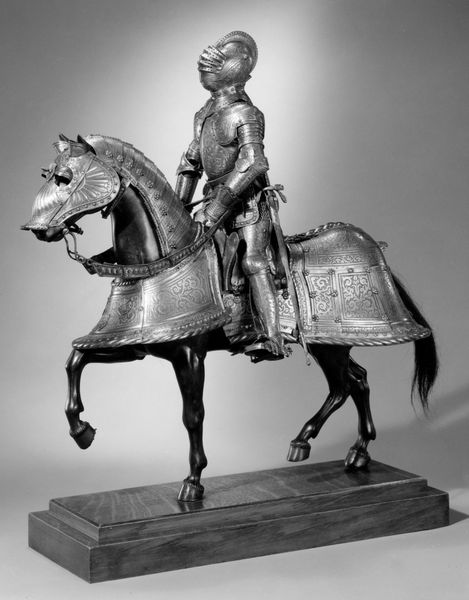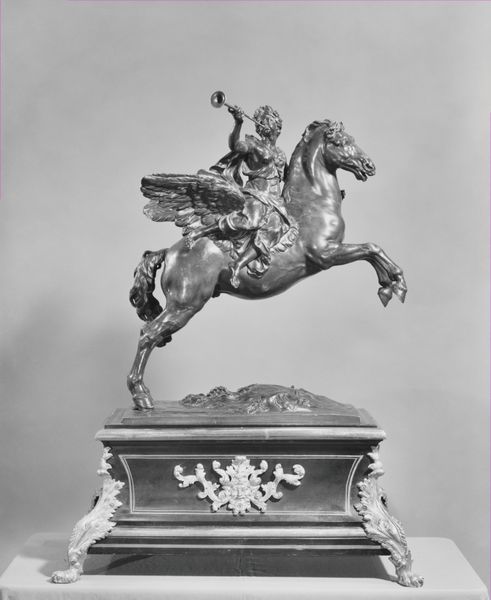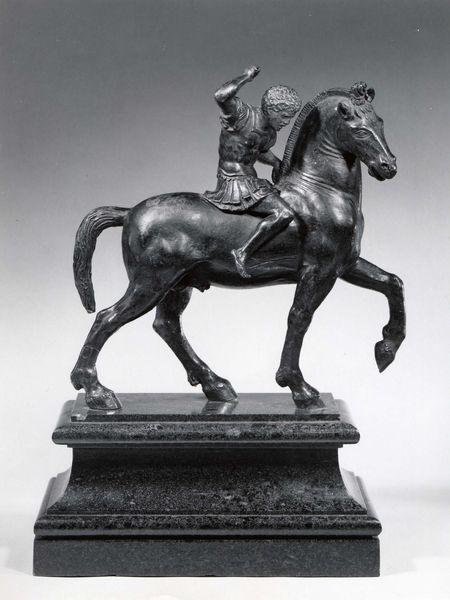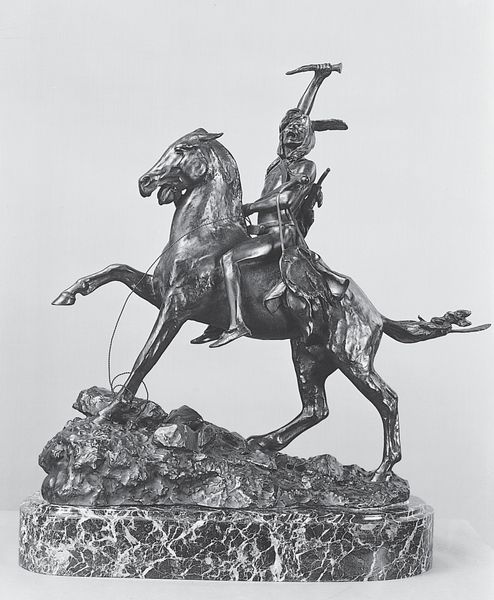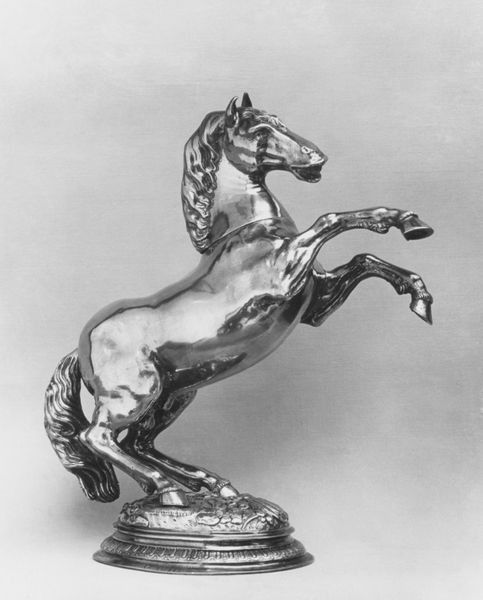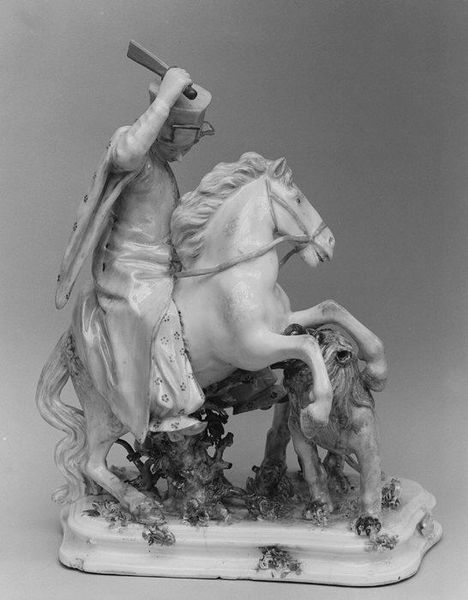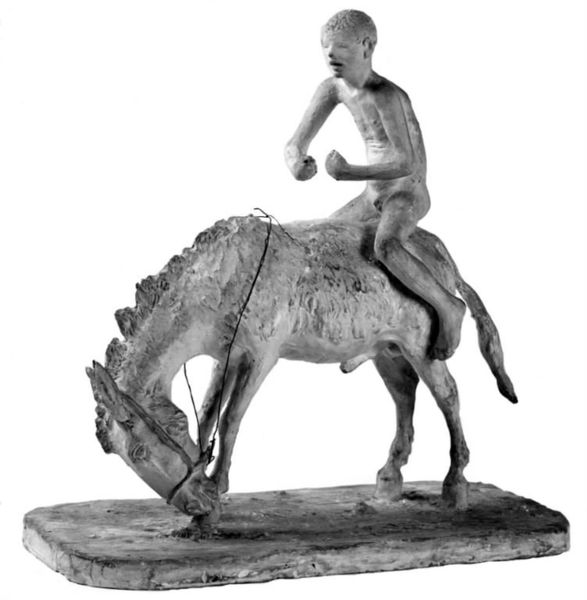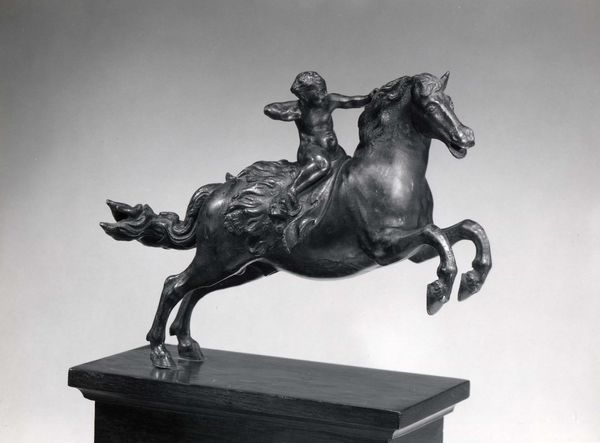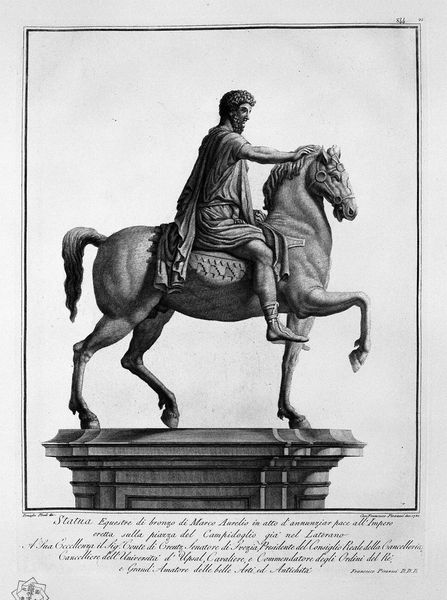
Frederik V on Horseback. Sketch for Equestrian Statue in Amalienborg Palace Square 1758
0:00
0:00
sculpture, marble
#
portrait
#
baroque
#
sculpture
#
sculpture
#
black and white
#
history-painting
#
marble
#
realism
#
statue
Dimensions: 92 cm (height) x 84.5 cm (width) x 36 cm (depth) (Netto)
Editor: Right, next up we have Jacques François Joseph Saly's marble sculpture, "Frederik V on Horseback," a sketch from 1758 for the equestrian statue in Amalienborg Palace Square. There's a powerful stillness about it, a sense of controlled energy ready to be unleashed. How would you interpret this work? Curator: It whispers of power, doesn't it? But not just any power – divinely ordained, absolute authority made flesh, or rather, stone! This is Baroque swagger distilled, a deliberate harkening back to Roman emperors. Saly is presenting Frederik as this wise, strong leader in the classical style – but is it all just pomp, or is there something more there? Look at the horse's pose, the rider’s almost casual grip on what appears to be a short, thick, broken sword...it seems rather symbolic of something about his reign and the times... wouldn't you agree? Editor: Now that you mention the broken sword, I initially interpreted it as a simple riding crop, which made the image appear benign. But there’s an intentionality to its stubby appearance...It hints at restraint, perhaps? Curator: Precisely! Or the futility of war. Or perhaps that peace and prosperity can only truly be achieved after a long and difficult fight. So what seems like simple flattery at first glance actually invites us to ponder the complexities of power and its responsibilities. What did you glean about royal power after taking a closer look at the symbolism? Editor: That's fascinating! I guess I was initially swept away by the overall impression of grandeur and missed some of the nuances. Royal portraits aren't as simple as one might think, huh? I appreciate your interpretation! Curator: Exactly! A good piece of art always reveals itself slowly and encourages close, slow looking, revealing something different each time!
Comments
statensmuseumforkunst almost 2 years ago
⋮
For centuries the horse was an essential foundation for the worldly power of kings and princes. Its importance in war and peace - as a weapon and as a means of transport and communication – made it a strong symbol of might and glory. It would take more than 15 years from start to finish before Frederik V had his own splendid equestrian statue in the square of Amalienborg Palace. It shows the king as a keeper of peace and a father to his people rather than as a general. He controls the powerful creature with gentleness. The mount itself is an idealised version of the Danish Frederiksborg horse, which was bred intensively in the 19th century but later became extinct. The artist Saly was already established in France when he went to Denmark in 1753. Smaller studies were used to plan the large, complex task of constructing the statue, which ended up costing half a million Danish thaler. Enough to build ten mansions at Amalienborg Square!
Join the conversation
Join millions of artists and users on Artera today and experience the ultimate creative platform.
